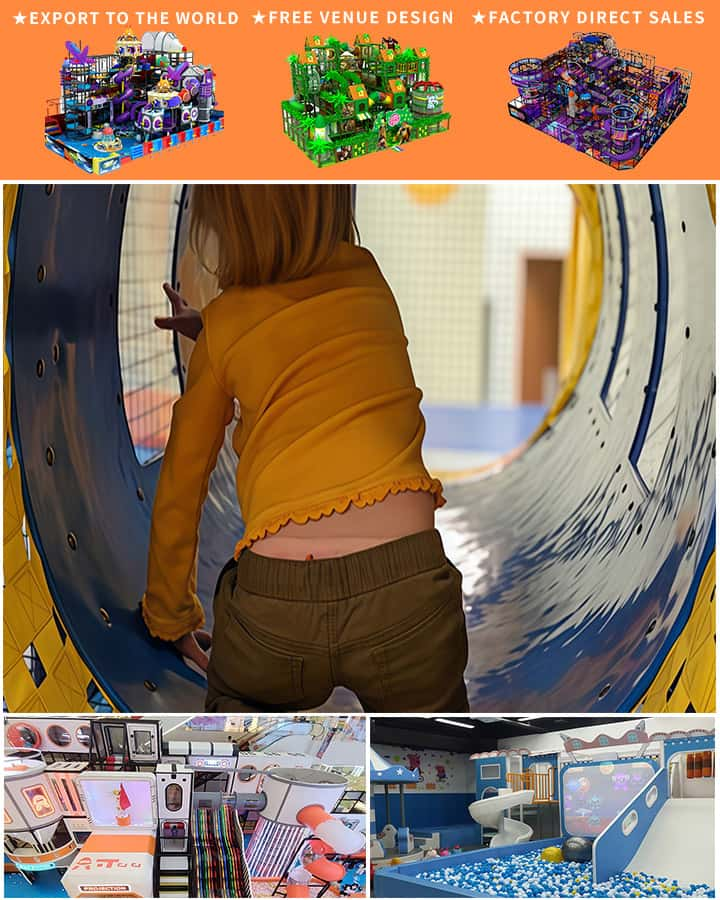Playgrounds are magical realms where children explore, learn, and have a great time. Equipped with various play structures, each piece is designed to foster physical activity, social interactions, and imaginative play. In this comprehensive guide, we’ll explore some of the most popular playground equipment names, accompanied by vivid descriptions and pictures, helping you recognize and appreciate these wonderful play installations.
1. Swing Sets
Description:
Swing sets are perhaps the most iconic piece of playground equipment. They consist of a frame with swings suspended from it, allowing children to experience the joy of swinging back and forth. Swings can be made for individual use or as double swings for shared experiences.
Variations:
- Tire Swings: Made from old tires, often hung on chains.
- Bucket Swings: Feature a small bucket seat for added comfort.
- Infant Swings: Designed with safety harnesses for younger children.
2. Slides
Description:
Slides offer a thrilling descent that children adore. These inclined planes come in various designs, materials, and sizes, providing both fun and a bit of adrenaline rush.
Variations:
- Metal Slides: Typically found in parks; they tend to heat up under the sun.
- Plastic Slides: Commonly used in backyard playgrounds due to their durability and safety.
- Spiral Slides: A winding slide design that adds an extra level of excitement.
3. Monkey Bars

Description:
Also known as horizontal ladders, monkey bars provide a robust upper body workout. Children grip them and move hand over hand to navigate across.
Variations:
- Standard Monkey Bars: Straight bars at varying heights.
- Overhead Ladders: Horizontal rungs that require coordination and strength.
4. Seesaws
Description:
Seesaws, or teeter-totters, are a classic form of playground balance equipment. When one child goes up, the other comes down, teaching basic principles of leverage and cooperation.
Variations:
- Traditional Board Seesaw: The classic wooden plank balanced on a pivot point.
- Seat Seesaw: Comes with seats for added comfort and safety.
5. Climbing Walls
Description:
Climbing walls are vertical structures equipped with holds and footholds, offering a challenge for young adventurers to reach the top. They promote physical fitness, coordination, and problem-solving skills.
Variations:
- Vertical Climbing Walls: Straight up and down structure.
- Angled Climbing Walls: Slanted for easier access and more gradual climbing.
- Rock Climbing Walls: Mimic natural rock formations with varied holds.
6. Merry-Go-Round
Description:
Merry-go-rounds are circular structures that spin around when pushed or powered electronically. They provide a gentle ride and are a staple in community playgrounds.
Variations:
- Manual Merry-Go-Round: Operated by pushing or pulling.
- Motorized Merry-Go-Round: Features a motor for continuous motion without manual effort.
7. Balance Beams
Description:
Balance beams are narrow, raised platforms that challenge children to maintain their balance while walking from end to end. They improve coordination and core stability.
Variations:
- Straight Balance Beams: Simple beams at a uniform height.
- Curved Balance Beams: Adds complexity with gentle curves.
- Stepping Stones: Discrete stepping areas along a path requiring careful navigation.
Conclusion
Playgrounds offer a wealth of opportunities for growth, exploration, and enjoyment through diverse equipment. From swing sets to climbing walls, each piece plays a unique role in developing physical abilities and building social skills. Recognizing these playground equipment names with pictures not only enhances our appreciation but also helps us ensure safe and enjoyable playtime for all children. So next time you visit a playground, take a moment to observe and understand the myriad ways these structures contribute to the joyous world of childhood play!




